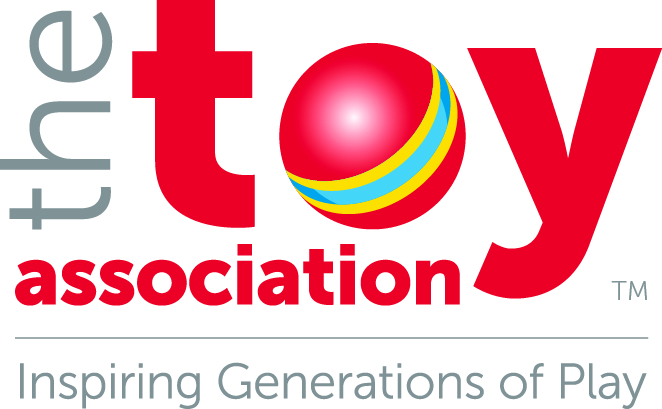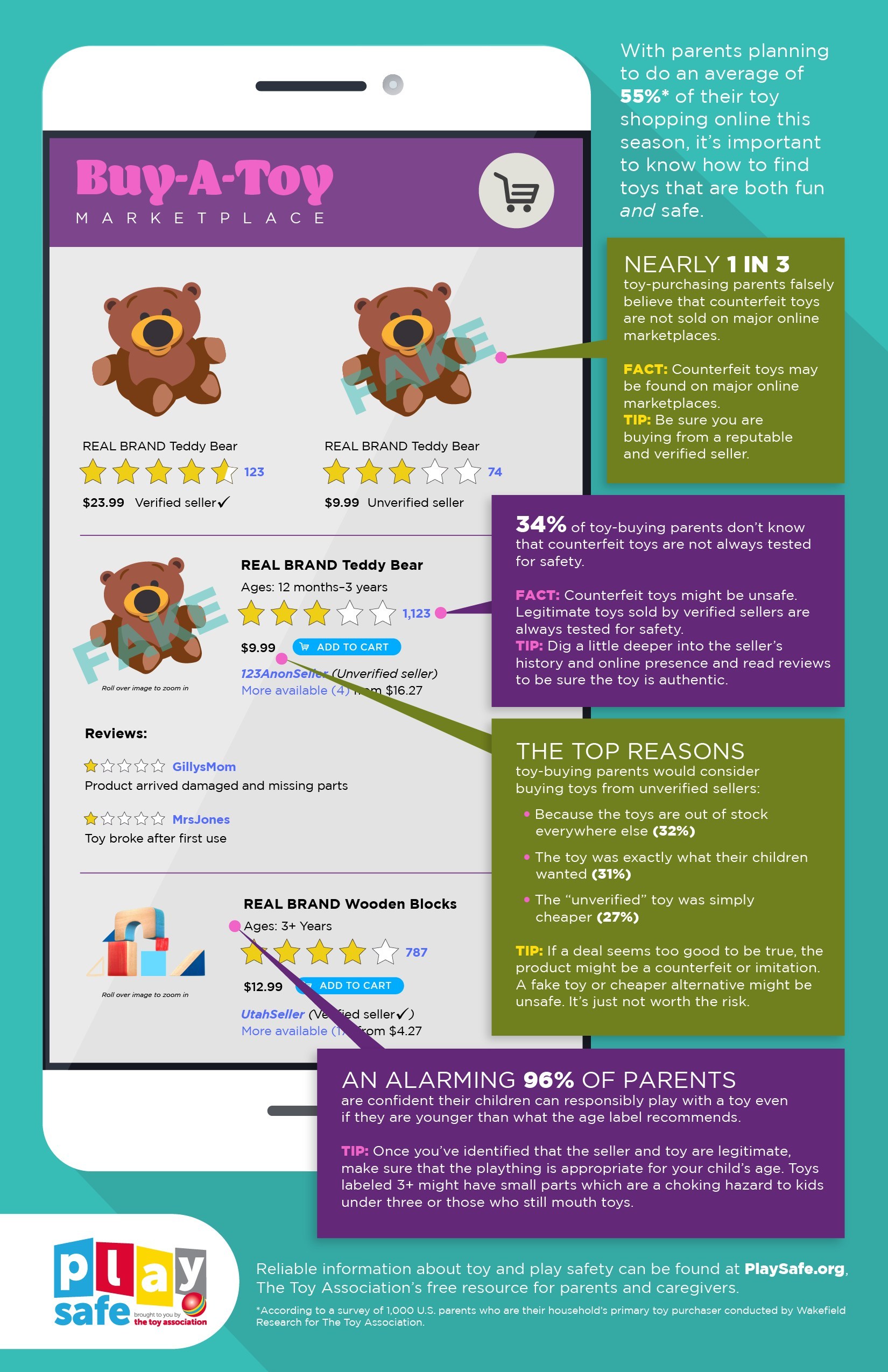FOR IMMEDIATE RELEASE
1 in 3 Parents Don’t Know that Counterfeit Toys are Lurking Online
Before Clicking “Add to Cart” Follow These Tips for Avoiding Fraudulent Toys that Might be Unsafe this Holiday Season
 NEW YORK, NY | November 4, 2019 – Nearly 1 in 3 toy-purchasing parents (31 percent) falsely believe counterfeit toys are not sold on major online marketplaces, representing a blind spot through which fraudulent toys that might be unsafe can slip into households this holiday season, according to a survey of 1,000 U.S. parents who are their household’s primary toy purchaser conducted by Wakefield Research for The Toy Association.
NEW YORK, NY | November 4, 2019 – Nearly 1 in 3 toy-purchasing parents (31 percent) falsely believe counterfeit toys are not sold on major online marketplaces, representing a blind spot through which fraudulent toys that might be unsafe can slip into households this holiday season, according to a survey of 1,000 U.S. parents who are their household’s primary toy purchaser conducted by Wakefield Research for The Toy Association.
With survey results indicating that 70 percent of American parents are planning to do half or more of their holiday toy shopping online this year, it’s critical for families to understand the dangers of counterfeit and imitation toys – and how to avoid inadvertently purchasing them.
"The U.S. toy community is committed to producing fun, developmentally valuable, and safe toys that comply with our nation’s 100+ rigorous toy safety standards and testing regimes. Rest assured that products sold by thousands of legitimate U.S. toy companies – whether in retail stores or online – are indeed safe," said Steve Pasierb, president & CEO of The Toy Association. "Unfortunately, bad actors frequently outside our nation manage to infiltrate online marketplaces, so we continually alert and educate parents on how to protect themselves by purchasing toys only from honest, legitimate manufacturers and sellers. The Toy Association and our members remain relentlessly focused year-round on working with government agencies and leading e-commerce platforms to combat the issue of counterfeit products and rogue sellers."
The Hidden Dangers of Counterfeit Toys
More than a third (34 percent) of toy-buying parents don’t know that counterfeit toys are not always tested for safety and might be unsafe to bring into the home. On the other hand, legitimate toys sold by verified sellers and known brands are tested for compliance with the U.S.’s 100+ strict standards and tests.
TIP #1: Parents are advised to dig a little deeper into a lesser-known seller’s online presence and reviews to be sure the toy they are considering is authentic – and therefore, safe. Can’t find a website for the manufacturer or seller at hand? That’s one red flag. Multiple grammatical errors in a product description or poorly photoshopped pictures are more red flags. A great alternative is to visit the toy brand’s website and either purchase directly from the site or follow links to an official retailer to purchase.
Worth the Risk?
Many parents admit that they might gamble on unverified sellers—and for reasons that cast safety aside. The top reasons parents would consider buying toys from unverified sellers include: the toys being out of stock everywhere else (32 percent) or if the toy was exactly what their children wanted (31 percent). Over a quarter (27 percent) of parents would be enticed if the “unverified” toy was simply cheaper.
TIP #2: If a deal seems too good to be true, the product might be a counterfeit or imitation. A fake toy or cheaper alternative might be unsafe – it’s just not worth the risk.
Age Grading: It’s More than Just a Number
An alarming 96 percent of parents surveyed are confident that their children can responsibly play with a toy even if they are younger than the toy’s age recommendation. This is troubling because grading is not based on a child’s intelligence, but rather his or her developmental skills at a given age. Toys labeled 3+ might contain small parts that are a choking hazard for children under age three or those who still mouth toys.
TIP #3: After verifying that a seller is legitimate, parents should check the toy’s age recommendation and only select toys that match their child’s age and interests.
The Toy Association encourages parents to be vigilant about the toys they bring into their home by only choosing playthings from reputable, known, and verified brands and sellers. More information about toy safety and safe play can be found at www.PlaySafe.org.
The Toy Association survey was conducted by Wakefield Research among 1,000 U.S. parents who are their household’s primary toy purchaser, between September 25 and October 2, 2019.